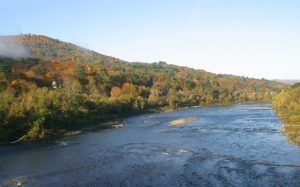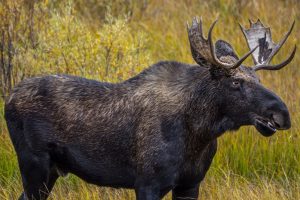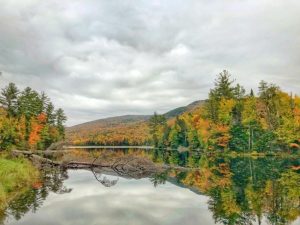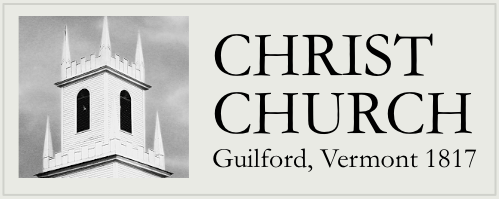The history of Christ Church Guilford appropriately starts with the land, and the land on which it sits is intimately and forever tied to the Abenaki and other Native peoples. As noted by the Historical Society of Windham County, around 1600, “as many as 10,000 western Abenaki inhabited modern day Vermont and New Hampshire, depending on seasonal hunting and fishing, gathering and some agriculture.”
A few material remains exist from this time and earlier that attest to Abenaki culture. Native peoples had dwelt for thousands of years in our area before contact with European explorers, traders and settlers. One example of extant material remains is petroglyphs, or rock carvings. A number have been found in southern Vermont. While difficult to date precisely, they offer intriguing clues as to Native lifestyles and beliefs.
One set of carvings, described by the Rev. David McClure in 1789 but observed even earlier by British colonists, was cut into an outcropping on the Vermont side of the Connecticut River in the Bellows Falls area. The carvings depicted several life-sized faces. Early white observers who studied the images interpreted them from a Western perspective, but recent analyses probably offer more accurate meanings, according to Rich Holschuh, a Tribal Historical Preservation Officer for the Elnu Abenaki of Southern Vermont and a member of the Vermont Commission on Native American Affairs.
Holschuh agrees with the assessment that the area around the Bellows Falls site is sacred space that was visited regularly by Native American shamans. Holschuh notes, “What the carvings are is evidence of the medicine people exercising their responsibilities to their people to balance the power, the spirits, the energies that are there.” The Native inhabitants considered the site to be of “extremely high spiritual significance” – and it still is.
This is important for our discussion of the area around Guilford because similar petroglyphs have been found in nearby Brattleboro (originally known by the Abenaki as Wantastegok) – at the confluence of the West and Connecticut Rivers but now underwater due to the construction of the Vernon Dam. Recently, according to an article in the Commons (July 6, 2022), master diver Annette Spaulding of Rockingham has located the site of so-called “Indian Rock.” This sloping rock ledge contains about 10 figures of birds, snakes and a dog or wolf. Ms. Spaulding has been searching for these petroglyphs for three decades.
There are probable examples of Native petroglyphs in Guilford – “way off the beaten path,” according to Holschuh – as well as in other towns.
In addition to the petroglyphs, evidence has also been found of Abenaki village settlements. These were located along the West River in Dummerston, in Vernon along the Connecticut River, and in Guilford along Broad Brook, according to a 2018 Brattleboro Reformer article. These settlements, along with other Abenaki artifacts and the petroglyphs, “point to a large Abenaki presence in Brattleboro’s past.”
This evidence helps us today to respect the original inhabitants of our region, as well as their descendants, and to gain a richer perspective on our larger history, not just that of Europeans since the 18th century. Edward F. Lenik, author of Picture Rocks: American Indian Rock Art in the Northeast Woodlands, notes that the most likely sites for Native carvings are around water, such as lakes, ponds, rivers and waterfalls.  The images often depict “fish, eels, serpents, thunderbirds, effigies, maybe deer or elk or moose, scratched into large stones and ledges.” Rivers such as our own Connecticut functioned essentially as Native “interstate highways.”
The images often depict “fish, eels, serpents, thunderbirds, effigies, maybe deer or elk or moose, scratched into large stones and ledges.” Rivers such as our own Connecticut functioned essentially as Native “interstate highways.”
As has become clear in recent years from accelerated research and activism, contact between the Abenaki and other Native groups and the first Europeans ultimately resulted in the near-annihilation of the Native population and the growth and domination of the newcomers. The Abenaki had been prepared to trade with the English settlers, “but whenever war broke out they (either alone or in alliance with the French) took the opportunity to attack and try to destroy the encroaching settlements that threatened their way of life.” Looking at the situation from the Native viewpoint is sobering.
These tragic events and relationships must be kept in the forefront of our minds even as those of us who are white and/or descended from the European settlers might celebrate many aspects of our history.  We who love Christ Church Guilford, our beautiful Vermont towns and landscapes, and our heritage would do well to remember that we are truly standing on the hallowed ground of the people who were here long before we were.
We who love Christ Church Guilford, our beautiful Vermont towns and landscapes, and our heritage would do well to remember that we are truly standing on the hallowed ground of the people who were here long before we were.
Vermont Abenaki Artists Association
While we do not at this time have a direct relationship with the Vermont Abenaki Artists Association, we would like people interested in Christ Church Guilford to know about this rich local resource of Native artists, artisans, craftspeople, performers and writers. We also invite members of the VAAA to contact us if you are interested in working with us on mutually-beneficial projects or events.
The Atowi Project
The Atowi Project, a nonprofit organization founded under the fiscal agency of the Retreat Farm and assisted by the Vermont Land Trust, has negotiated an offer to obtain nearly two acres of land on the waterfront near the petroglyphs recently rediscovered by master diver Annette Spaulding. The group has named the property the Wantastegok Sacred Site. It is adjacent to land that has been conserved as a wildlife sanctuary, which creates “a physical presence and visibility for the Abenaki tribe,” according to the Commons article by Fran Lynggaard Hansen.
The Atowi Project, according to its website, “is an Elnu Abenaki community initiative to affirm Native relationships to the Land and its inhabitants, raise Indigenous voices, and foster inclusion with understanding, in place.”
